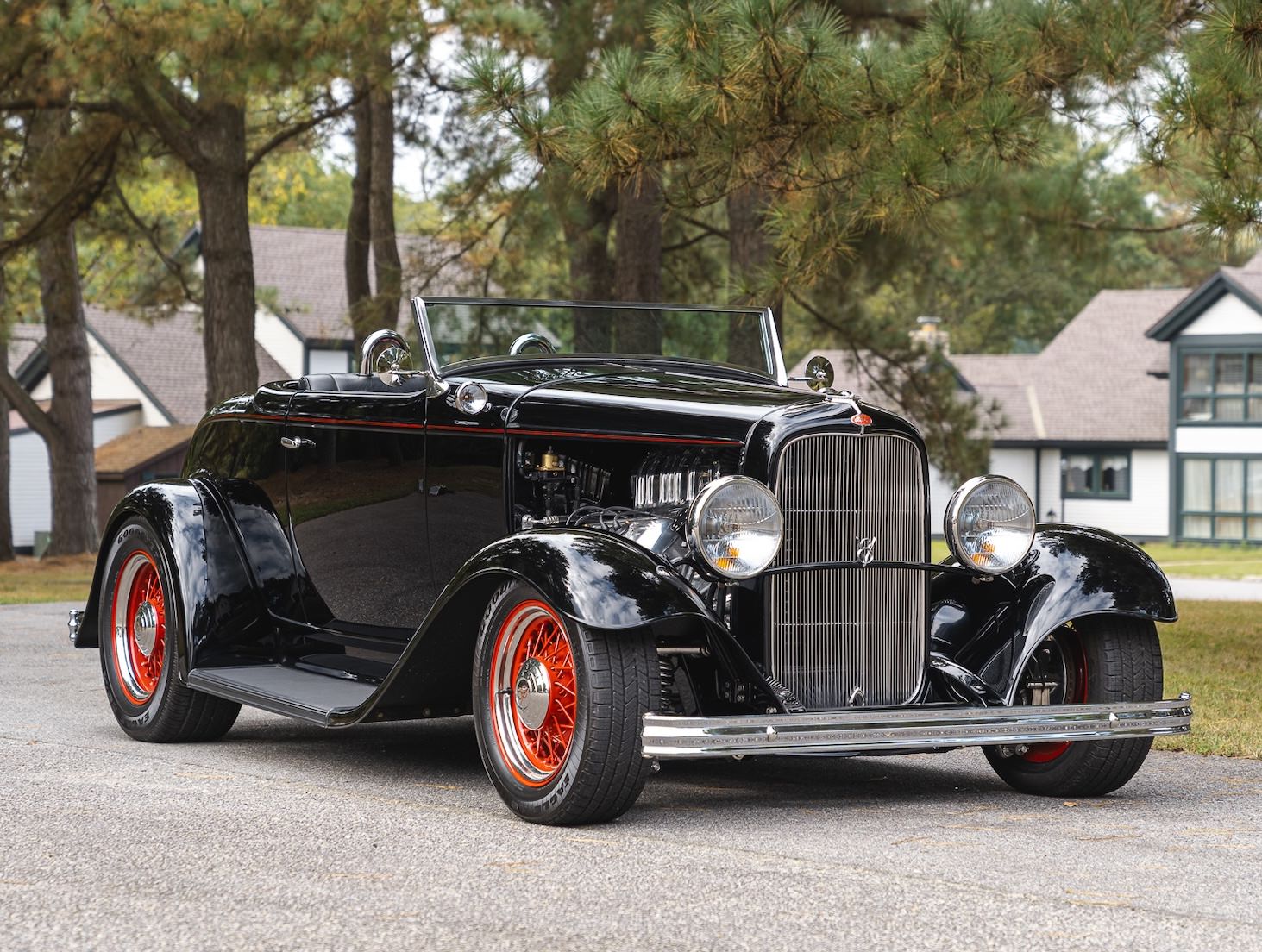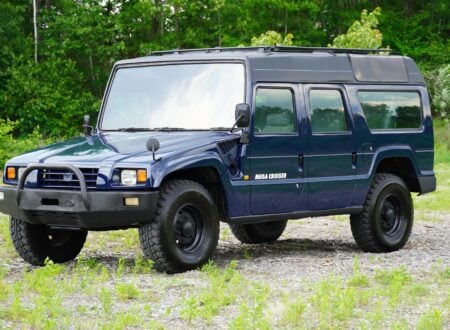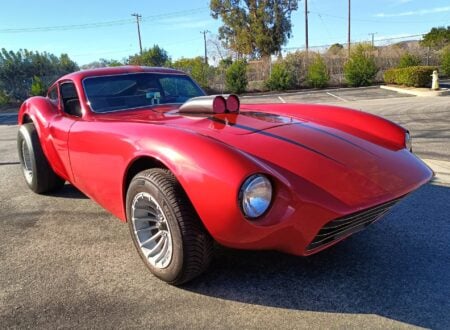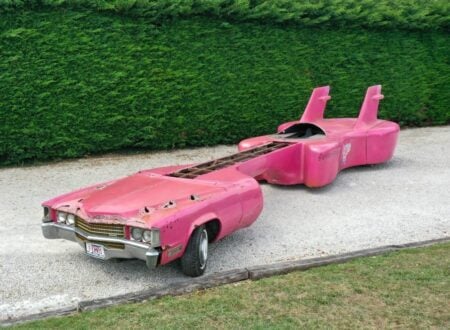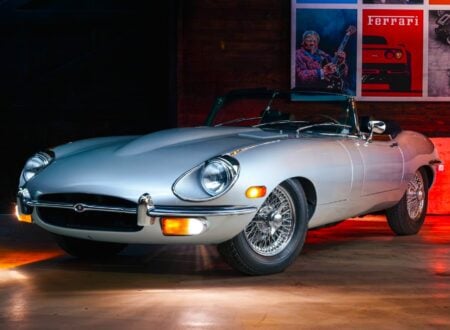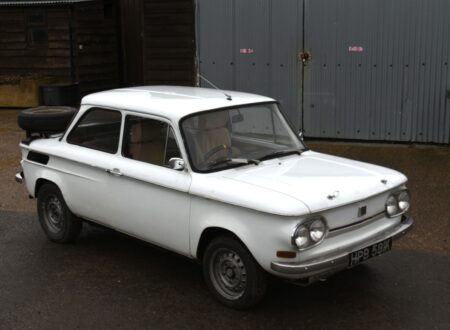This is possibly the perfect example of a true American hot rod, it’s a 1932 Ford Roadster powered by a Flathead Ford V8, now fitted with aftermarket Ardun heads turning it into an overhead valve engine. It also has a supercharger bolted on, just for good measure.
There is perhaps no single genre of car more purely American than the hot rod. They exploded in popularity after WWII and became a major cultural touchstone of the 1950s. They remain wildly popular today around the world, as they offer an unrivaled analogue driving experience.
Fast Facts – A Supercharged 1932 Ford Roadster V8
- This 1932 Ford Roadster, a quintessential example of the American hot rod, is powered by a 294 cubic inch (4.8 liter) stroker V8 with Ardun overhead valve heads and a polished BDS supercharger. Built for performance, it also has custom exhaust headers, Hilborn fuel injection, and a Tremec TKO 500 five-speed manual transmission.
- The Flathead Ford V8, introduced in 1932, revolutionized the auto industry by making V8 engines affordable and accessible. Its widespread adoption created a thriving aftermarket for performance parts, including the legendary Ardun heads developed by Zora Arkus-Duntov, later known as the “Father of the Corvette.”
- Hot rods gained popularity after WWII, with returning GIs modifying cars like the 1932 Ford V8 for racing. Lightweight frames, powerful engines, and stripped-down aesthetics defined the movement, paving the way for drag racing and cementing the hot rod as a cultural icon.
- This 1932 Ford Roadster, finished in clear-coated black with pinstriping, features a Dearborn Deuce steel body, Heidts independent suspension, adjustable coilovers, and Wilwood disc brakes. Offered for sale in Maryland, it comes with a clean Montana title and represents the pinnacle of modern hot rod craftsmanship.
The Importance Of The American V8
In 1932 Ford would release a car that fundamentally changed the landscape of the American automobile industry. It was called the 1932 Ford Model 18, and it was powered by the then-new Flathead Ford V8. This would be the first time a V8 was available in an affordable, mass-market car, and the American public responded by buying them in vast numbers.
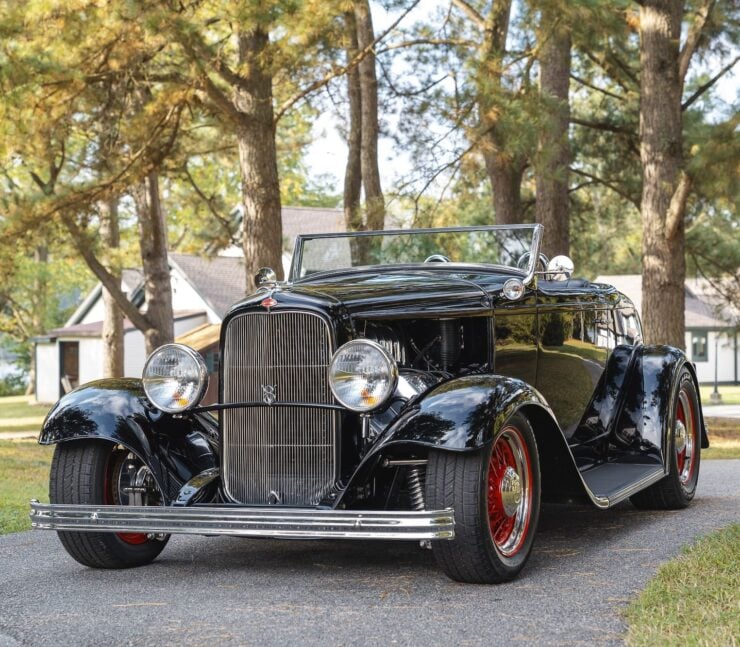 Both aesthetically and mechanically, this is about as close to a perfect 1932 Ford Hot Rod as it’s possible to get. Though of course much of this is subjective.
Both aesthetically and mechanically, this is about as close to a perfect 1932 Ford Hot Rod as it’s possible to get. Though of course much of this is subjective.The American love affair with the V8 engine began in earnest with the 1932 Ford and it would continue unabated to the modern day. There is no engine architecture more closely associated with the American automotive industry, even though the first V8 was actually designed and built across the Atlantic by Frenchman Léon Levavasseur in 1904.
This first V8 engine would be called the Antoinette, after the French Antoinette company, and it would see use in speedboats, early automobiles, and even airplanes. The V8 engine would come to America in 1907 in the Hewitt Touring Car designed by Edward R. Hewitt.
The 1914 1914 Cadillac L-head V8 is broadly considered the first truly mass-produced V8 automobile engine in the world, with over 13,000 sold, though the price point meant that it was only ever really an option for wealthier buyers.
The Ford Flathead V8 Arrives
The 1932 Ford with its low-cost Flathead V8 would appear in 1932, it offered far more power than Ford’s Flathead inline-fours but didn’t take up a whole lot more room. It produced considerably more power and torque, and perhaps even more importantly, it sounded better.
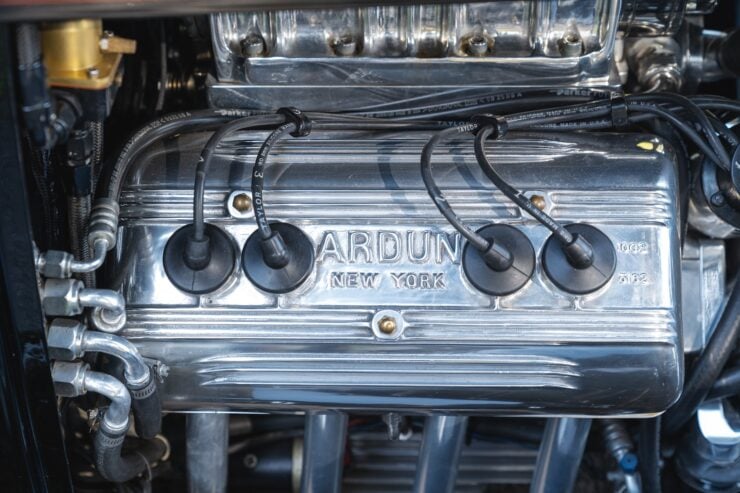 Here you see an example of the Ardun heads – they turned the Flathead Ford V8 into an overhead valve engine, vastly improving its performance.
Here you see an example of the Ardun heads – they turned the Flathead Ford V8 into an overhead valve engine, vastly improving its performance.Ford dealers had trouble keeping the new V8 on their lots as they were selling almost as soon as they arrived. They became a common sight on the road, and seemingly overnight an immense aftermarket industry sprung up to provide performance parts for the new engine.
The Ardun Heads + Zora
Perhaps the single most desirable of these performance add-ons for the Flathead V8 were the Ardun heads, a pair of new heads that could be fitted to the Flathead V8 to turn it into an overhead valve engine with far better breathing, and subsequently, much more power.
The Ardun heads were developed by Zora Arkus-Duntov and his brother Yura Arkus-Duntov (Ardun being a contraction of ARkus-DUNtov) . If that surname sounds a little familiar to you it might be because Zora would become a major figure in the America automotive industry in the years to follow.
It would be Zora Arkus-Duntov, a skilled racing driver and engineer, who raced V8 Allards at the 24 Hours of Le Mans in 1952 and in 1953. He quickly learned just how impressive the performance can be of a lightweight car with a large American V8 under the hood.
He joined General Motors in 1953 and soon took over the Corvette project, turning it from an inline-six-powered automatic boulevarde cruiser into a V8-powered manual with performance match and even beat the best sports cars coming out of Britain, Germany, and Italy. He’s now affectionally referred to as the “Father of the Corvette.”
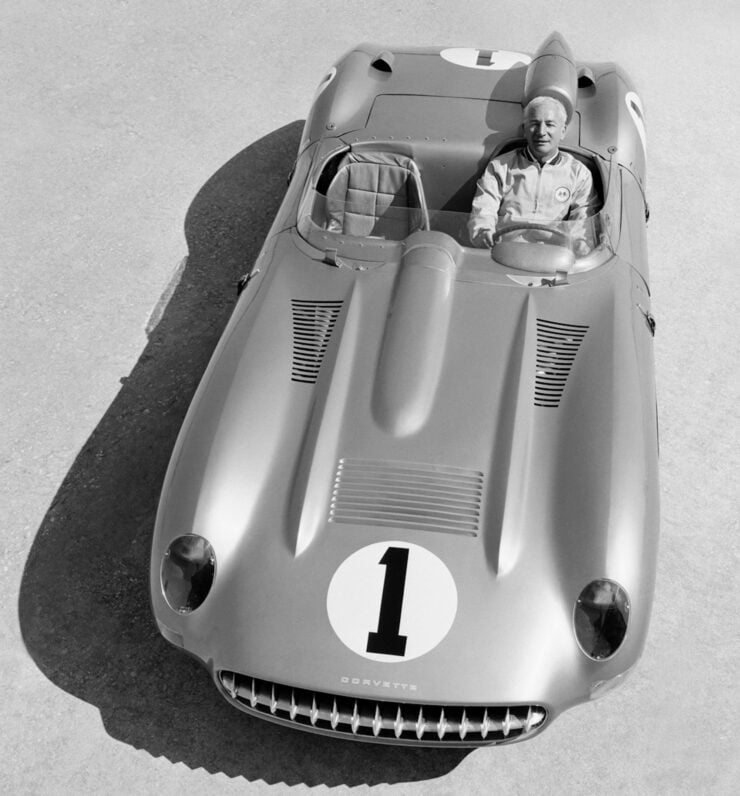 Here we see Zora Arkus-Duntov in the Corvette SS at Sebring in 1957. Image courtesy of General Motors.
Here we see Zora Arkus-Duntov in the Corvette SS at Sebring in 1957. Image courtesy of General Motors.The Hot Rod Appears
The first hot rods began appearing in the 1930s but it would be after WWII, from 1945 onwards, that the hot rod craze would really kick into high gear thanks to the two million American GIs that returned from the European theatre of war.
By this time, the 1932 Ford V8 was an affordable secondhand car that was 13+ years old, and it offered better performance out of the box than anything else on the used car salesman’s lot. The cheapest way to improve performance is by reducing weight, and this is what many owners did, resulting in that cutdown hot rod look that became a signature look.
Other ways of increasing performance were largely the same then as now, add a hot cam, higher compression pistons, increase displacement, add larger valves, and maybe a little forced induction.
Interestingly, higher performance cams or “hot cams” were commonly called “hot rods” due to their shape – and many think this is where the name hot rod as a descriptive term for the entire genre of modified cars came from.
These hot rods were raced by their owners, often down 1/4 mile stretches of asphalt on the outskirts of town, and this would lead to the establishment of the modern motorsport genre of drag racing.
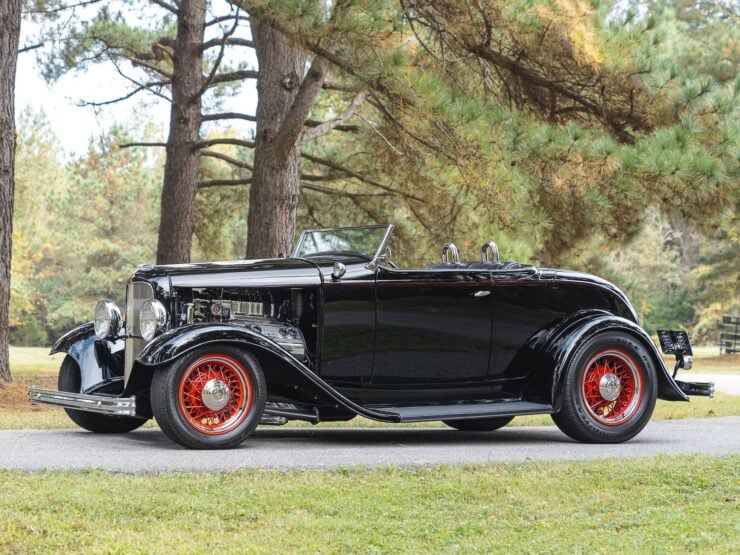 Hot rods like this have been drag racing on the outskirts of small American towns for the better part of a century now, and it’s an activity that’s unlikely to end anytime soon.
Hot rods like this have been drag racing on the outskirts of small American towns for the better part of a century now, and it’s an activity that’s unlikely to end anytime soon.The 1932 Ford Roadster V8 Shown Here
The car you see in this article is a 1932 Ford V8 Roadster that’s been fitted with a raft of upgrades to make it both genuinely quick, and perhaps the most perfect hot rod we’ve ever featured on Silodrome.
It’s based on a boxed steel frame with a Heidts Superide independent front suspension system and independent rear suspension, both ends are fitted with adjustable coilovers and Wilwood disc brakes – offering far better handling and stopping power than the originals.
The body is all steel and it comes from Dearborn Deuce. It’s finished in clear-coated Black PPG paint and period-correct pin-striping was added by Jerry Campbell of Delaware. It has a chopped windshield and a hideaway folding soft top with a black canvas top.
Power is provided by a 294 cubic inch (4.8 liter) stroker V8 with an aluminum block and aluminum Ardun heads. It has four-bolt mains, a billet steel crankshaft and camshaft, 4340 steel H-beam connecting rods, Ross forged pistons, and a Hilborn four-port fuel injection system.
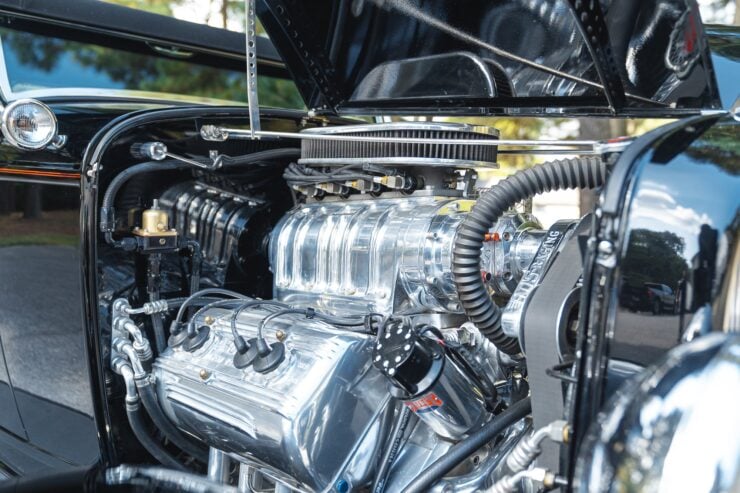 The 294 cubic inch (4.8 liter) stroker V8 has an aluminum block and aluminum Ardun heads, as well as a polished BDS 6-71 supercharger with Air-Loc rotors and 8mm pulleys.
The 294 cubic inch (4.8 liter) stroker V8 has an aluminum block and aluminum Ardun heads, as well as a polished BDS 6-71 supercharger with Air-Loc rotors and 8mm pulleys.Atop the engine, you’ll find a polished BDS 6-71 supercharger with Air-Loc rotors and 8mm pulleys. The exhaust headers were fabricated by Delaware Chassis Works and power is sent back through a Tremec TKO 500 five-speed manual transmission and a limited-slip differential to the rear wheels.
The car is now being offered for sale out of Centreville, Maryland on Bring a Trailer with a clean Montana title in the seller’s name listing the car as a 1932 Ford. If you’d like to read more about it or register to bid you can visit the listing here.
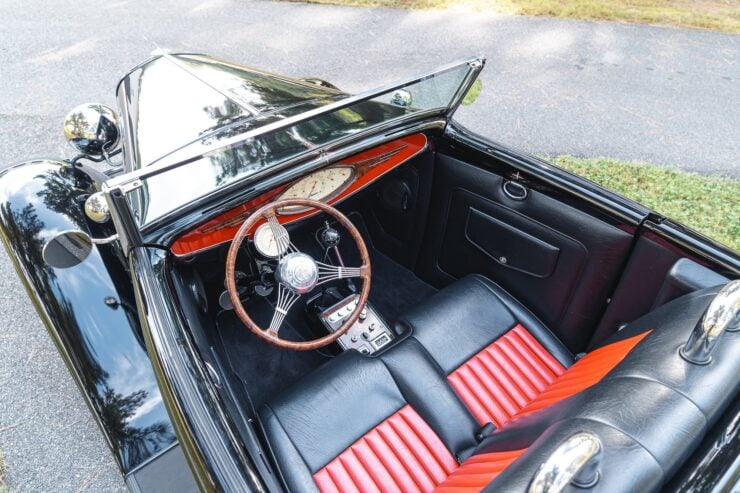 This vehicle is beautifully fitted out, with twin seats, a leather and wood trimmed interior, and many period-correct touches throughout.
This vehicle is beautifully fitted out, with twin seats, a leather and wood trimmed interior, and many period-correct touches throughout.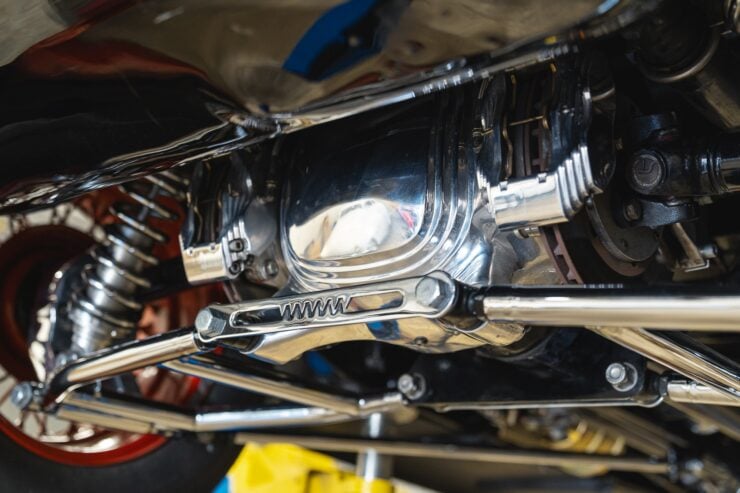
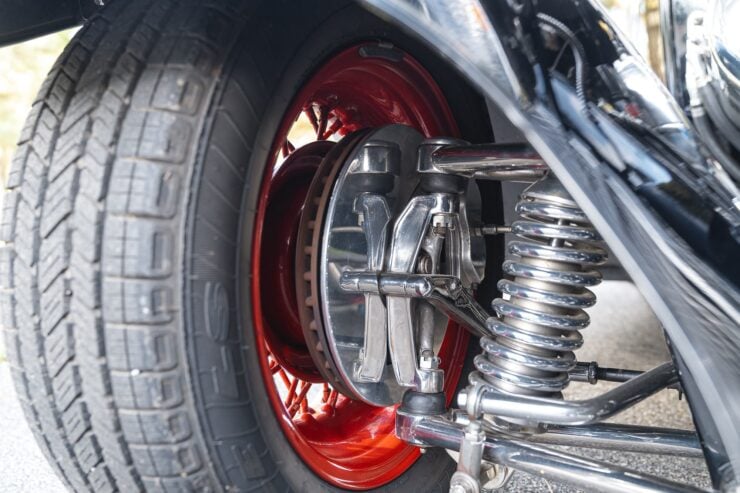
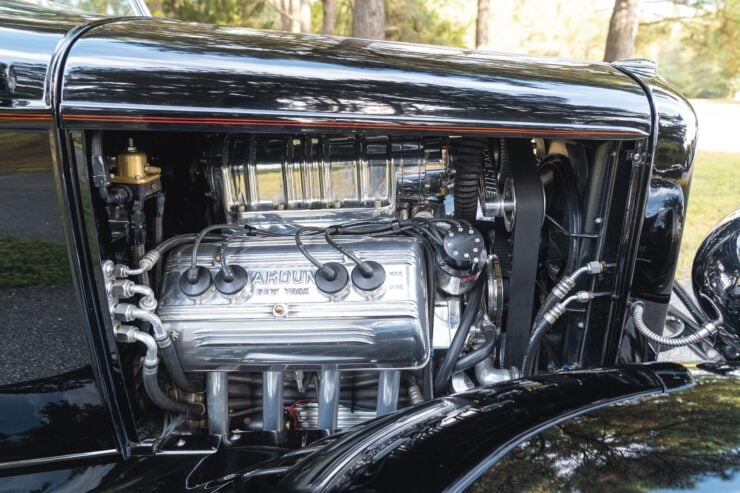
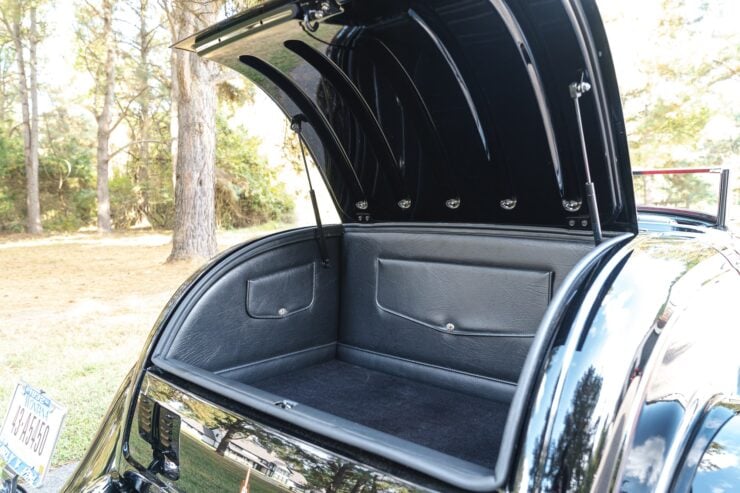
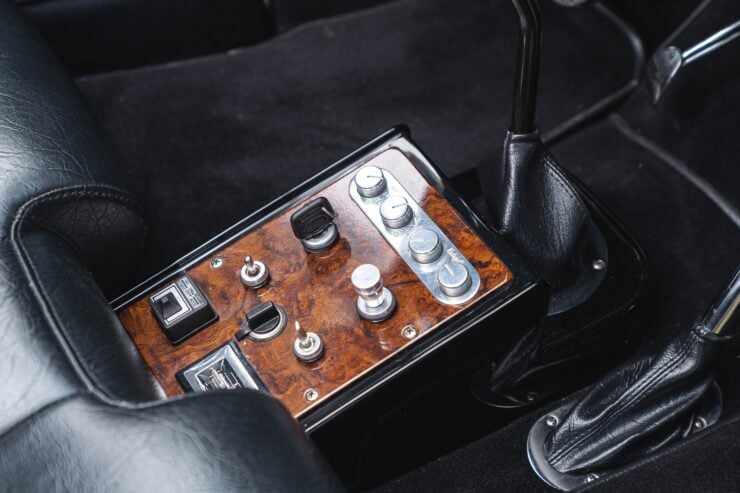
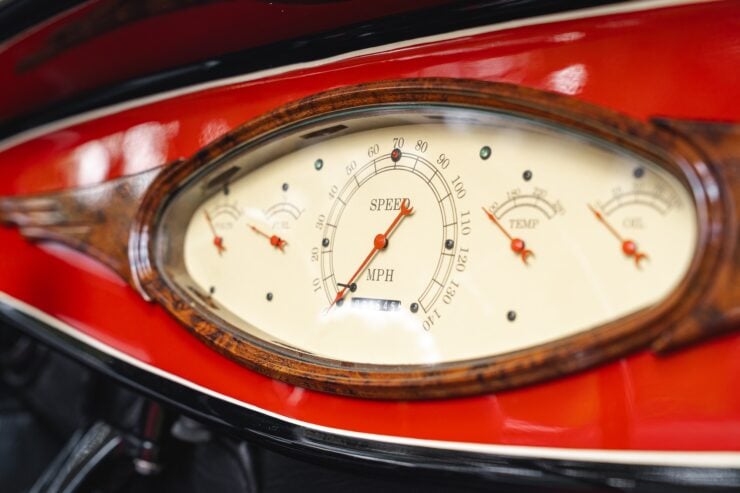
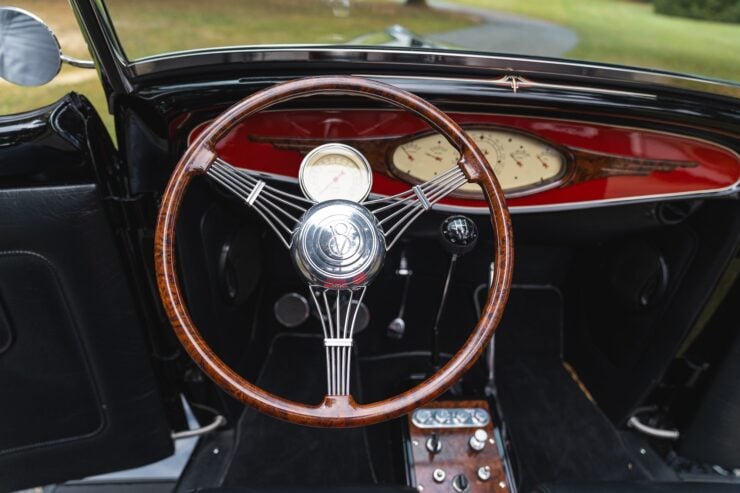
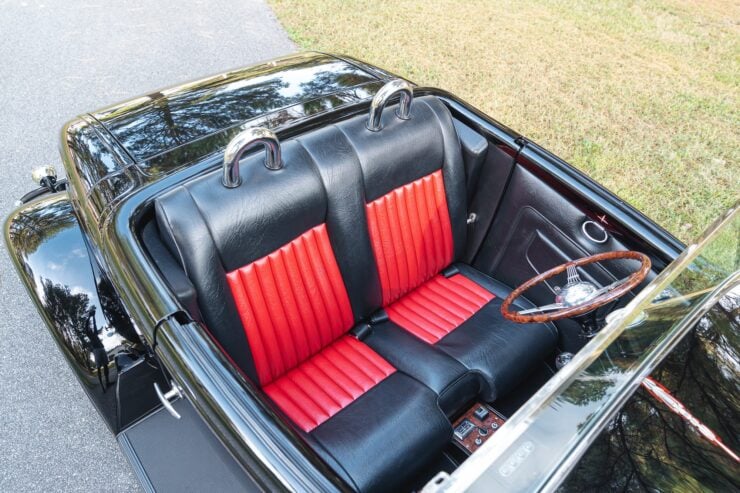
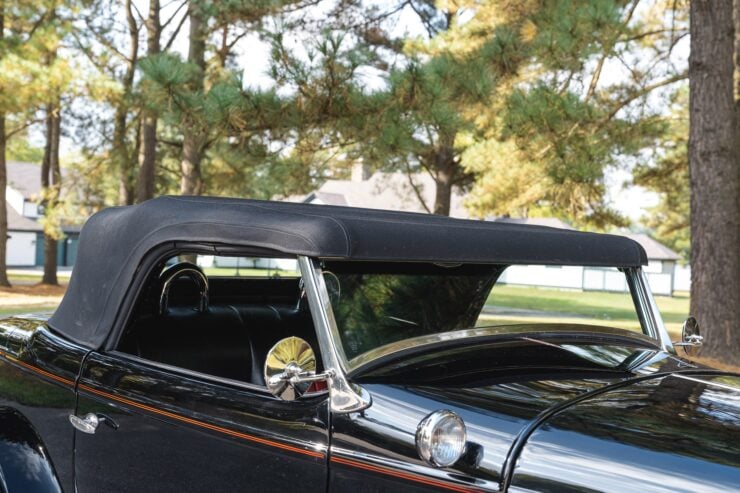
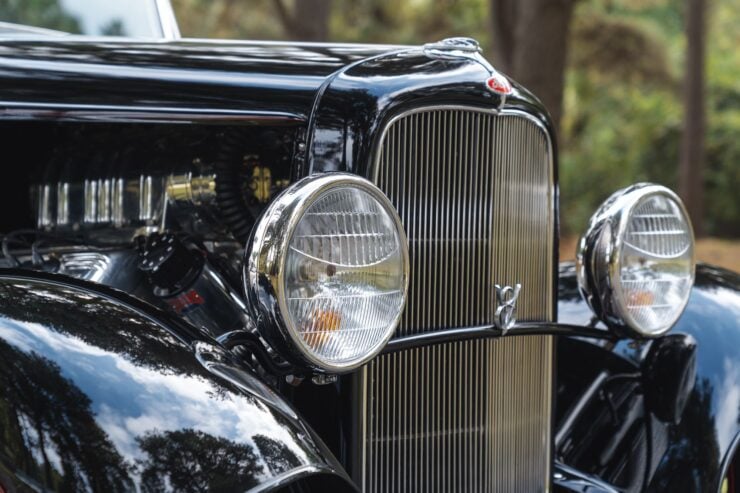
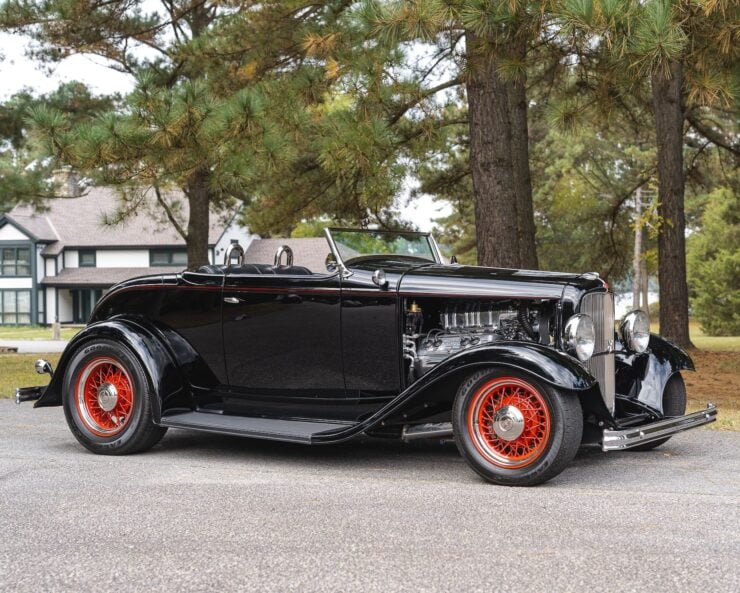
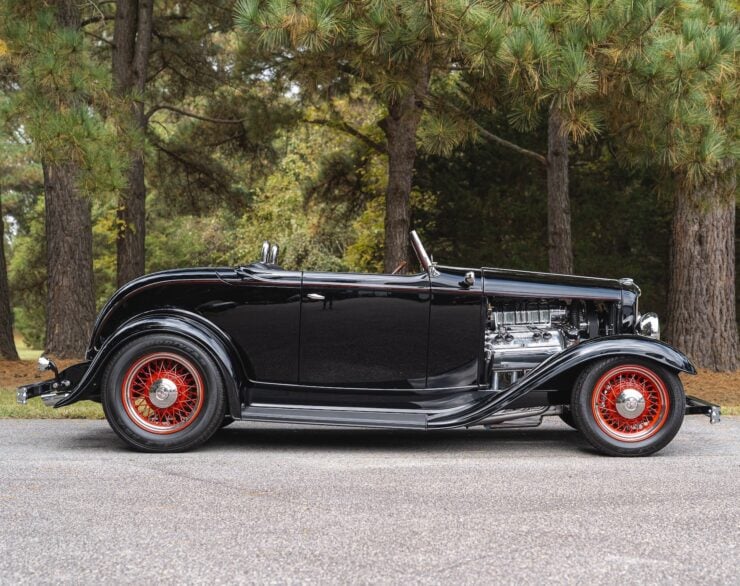
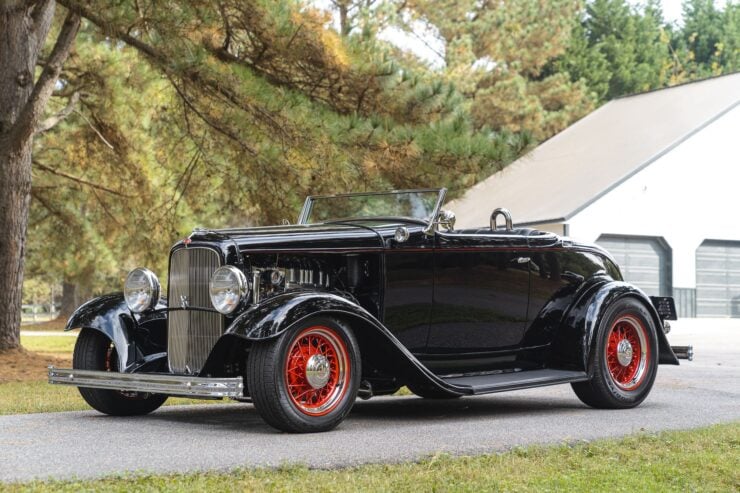
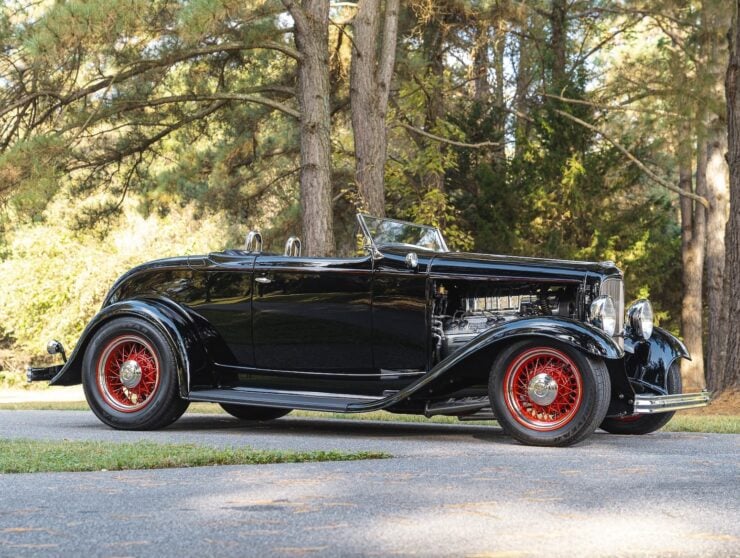
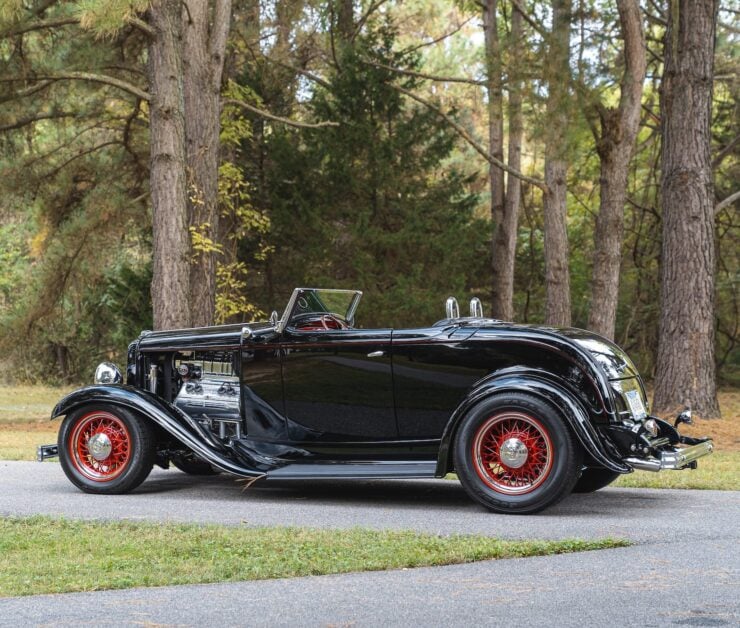

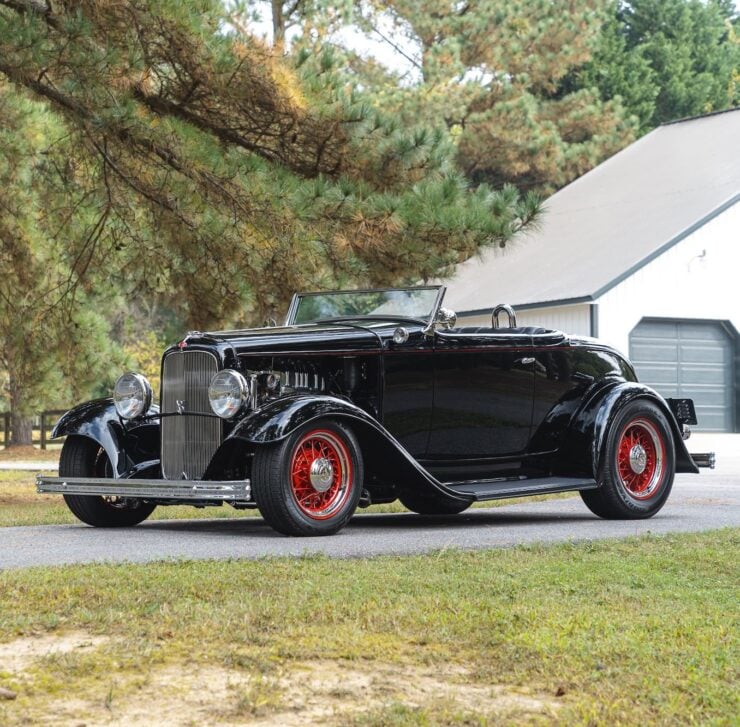
Images courtesy of Bring a Trailer

